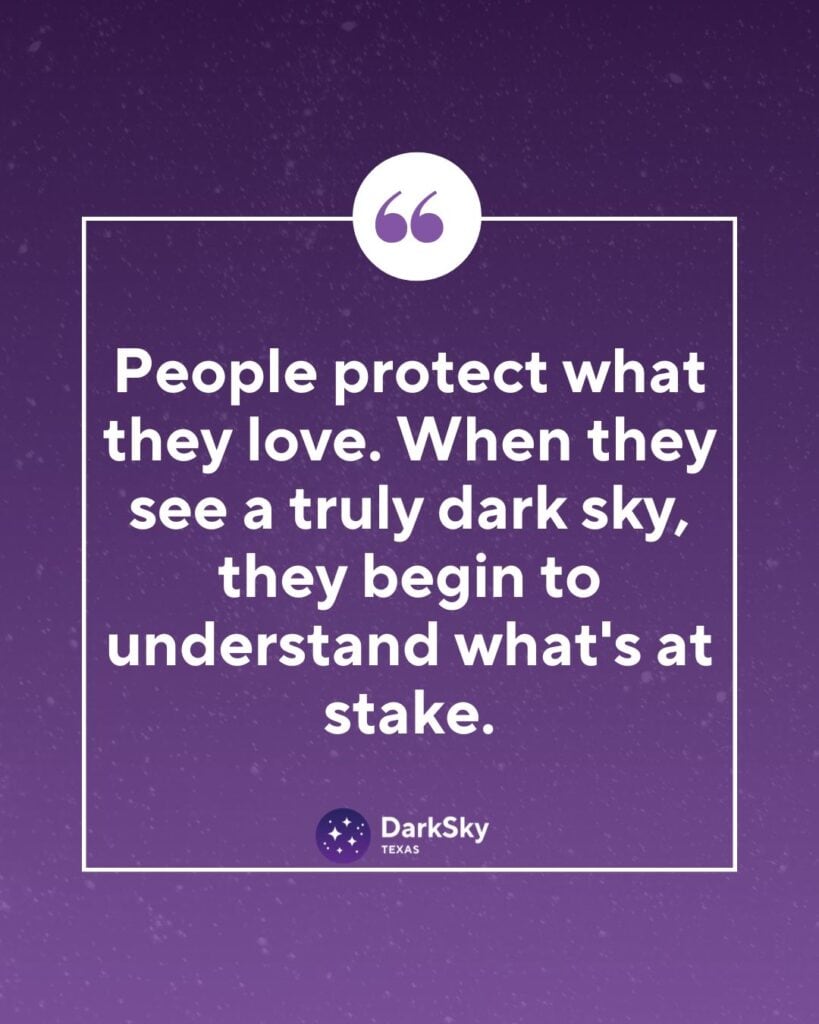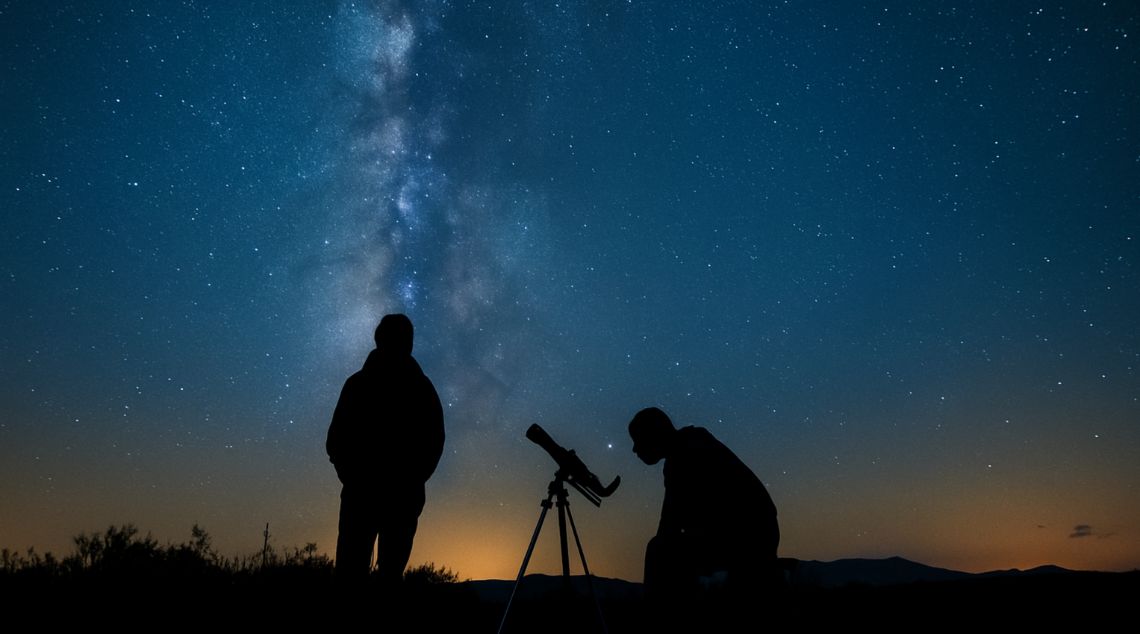Have you ever stood under the night sky and felt completely awestruck? There’s something profoundly moving about standing beneath a star-filled sky.
If you have experienced the beauty of a star-filled sky, you’ll be shocked to know that many people in Texas never get to see that any more due to light pollution. This is why light pollution and seeing artificial light drown out the night sky has become such a personal issue for many.
Experiencing Light Pollution Firsthand
Nothing illustrates the impact of light pollution quite like the stark contrast between rural and urban night skies. Most Americans now live in cities where it’s difficult to spot the Milky Way because of excessive artificial lighting. The difference between seeing a few dozen stars in the city versus thousands in a dark sky location can be an eye-opening revelation.
In the 1800s, anyone could step outside and see the Milky Way. Today, this cosmic spectacle is invisible to roughly 80% of Americans and one-third of humanity who can no longer see the galaxy we all live in from their homes. This loss becomes tangible when people experience a truly dark sky for the first time, often prompting the question: “Is that really what we’re missing every night?”
Stargazing as a Family and Community Activity
Stargazing naturally brings people together. Family trips to dark sky parks, neighborhood star parties, or astronomy club events create shared experiences and memories centered around the night sky. Children especially respond with wonder to their first views through a telescope or identifying constellations with parents or grandparents.
These communal experiences help us recognize that dark skies are a shared heritage worth protecting for future generations. When a child asks, “Will the stars always be there?” we’re confronted with an uncomfortable truth: without conscious conservation efforts, many people will continue to lose their connection to the night sky.

Education Through Experience
Hands-on learning under the stars creates lasting impressions that traditional education often cannot match. At organized stargazing events, we can also learn about how light pollution disrupts ecosystems, interferes with human health by disrupting circadian rhythms, and erases cultural connections to the night sky that have inspired humanity for millennia.
When people directly experience the difference between light-polluted and pristine skies, abstract statistics about brightness levels and sky glow become personal and meaningful. This emotional investment transforms casual interest into environmental stewardship.
How Can You Protect What You Love?
People protect what they love. When individuals develop a personal relationship with the night sky through stargazing, they’re naturally motivated to preserve this experience. This motivation translates into action: it provides a direct motivation to advocate for responsible lighting ordinances, make changes to their own outdoor lighting, and meet like-minded people who can start a grassroots movement.
Every person who discovers the beauty of a dark night sky becomes a potential advocate for its protection. Their personal stories and experiences become compelling testimonials that can influence neighbors, community leaders, and policymakers to take light pollution seriously.
Responsible Lighting: The Middle Ground for Sustainable Living
Anyone can help restore our night skies by following these five essential principles for responsible outdoor lighting:
- Make Lights Useful: Only use outdoor lighting when and where it’s needed for specific purposes like safety or security.
- Keep Lights Targeted: Direct light downward and shield fixtures to prevent light from spilling upward or sideways where it’s not needed.
- Reduce the Amount of Light: Use only the minimum amount of light necessary for the task, avoiding over-lighting that contributes to glare and sky glow.
- Add Controls for your Light: Install motion sensors, timers, or dimmers to ensure lights operate only when needed and at appropriate brightness levels.
- Choose Warm-Colored Lights: Select bulbs with “warm” colors, such as yellow, which emit less blue light and are less disruptive to wildlife and human health.
By applying these principles to our homes and advocating for them in our communities, we can collectively reduce light pollution and restore visibility of the stars.
Help Protect the Night Sky
Taking personal action is the first step toward creating meaningful change. The DarkSky Texas Pledge is a decisive step to implement responsible lighting practices in your life. You can read it, add your name, and spread it around for free!
Next, consider helping DarkSky Texas in more material ways. Protecting the night sky requires ongoing education, research, and advocacy. Your financial support helps make these efforts possible. Donate to help fund dark sky initiatives in your community and beyond.
The stars have inspired humanity for thousands of years. With your help, they’ll continue to spark wonder and curiosity for generations to come.


